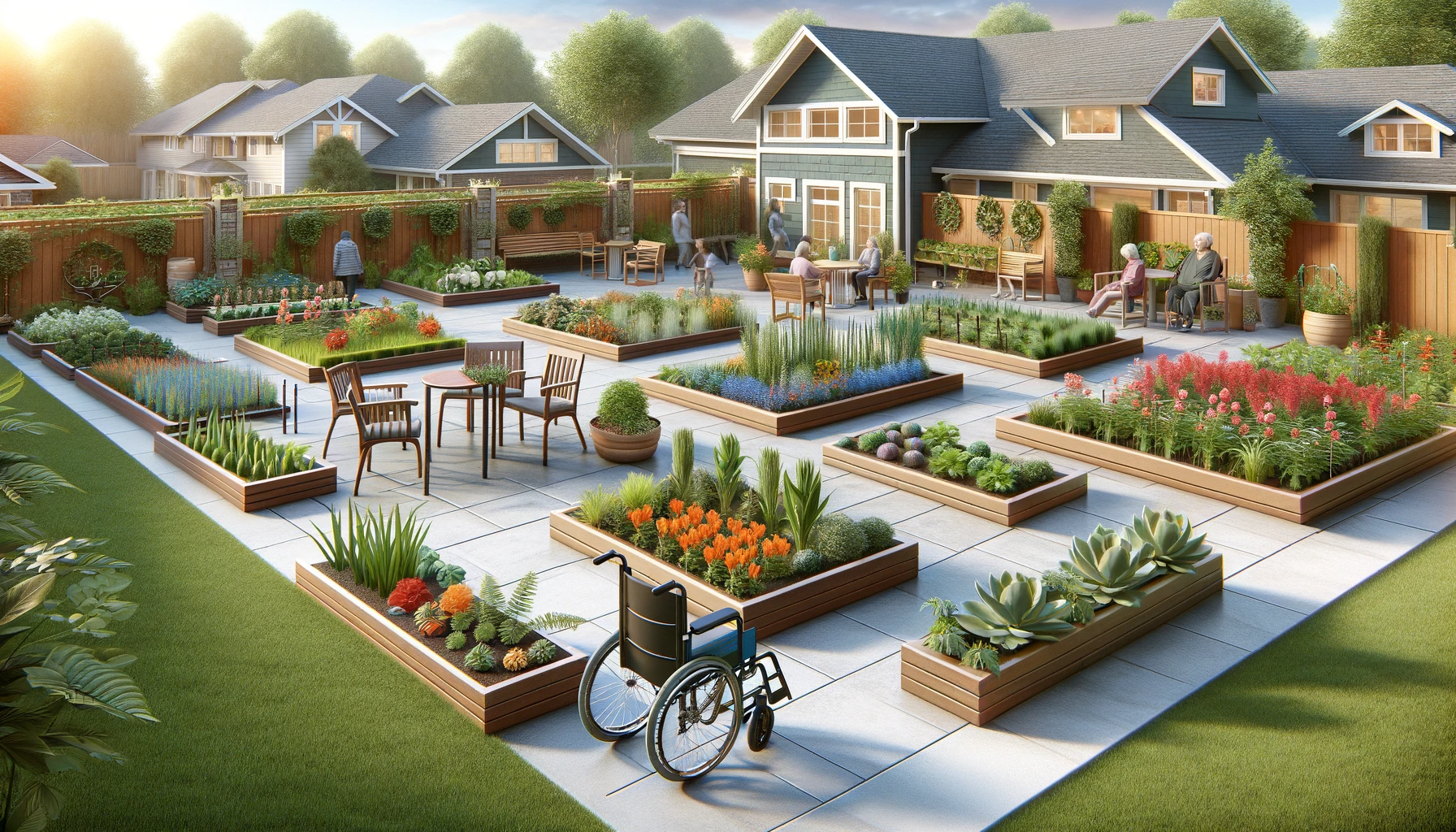Gardeners dealing with mobility limitations or disabilities need not abandon their passion for nurturing nature in an accessible garden. Importantly, with thoughtful incorporation of accessible design elements, Bay Area landscapes can welcome visitors of all abilities, thus enabling easier circulation, interaction, and enjoyment.
Further expanding on this, here are 5 inclusive design considerations for accessible, ADA-compliant landscape spaces:
First, include wide pathways made of smooth, stable permeable paving. This design choice facilitates movement for wheelchairs and walkers, ensuring ease of access.
Next, situate plants, play spaces, and activity zones within close reach from seating areas. Consequently, this layout allows for easy interaction and engagement with nature.
Minimize obstacles along routes and ensure they do not impede mobility or block required turn radiuses. This ensures smooth navigation throughout the garden.
Select sensory plants that offer fragrance, vibrant colors, and interesting textures for the accessible garden. These plants provide a multi-sensory experience, enhancing the joy of gardening.
Provide well-spaced garden tool storage stations in the accessible garden. Offer lightweight equipment choices at accessible heights to accommodate diverse abilities and body types.
Additionally, implementing raised beds, containers, and vertical walls in the accessible garden can significantly aid those with physical challenges. Adaptive tools, thoughtful hardscape routing, and strategic plant placement are tailored to overcome specific limitations. Thus, individuals facing physical or neurological challenges can readily connect with nature’s restorative magic in an accessible garden.
In conclusion, what inclusive garden solutions have you found effective? How do they bring nature’s benefits to you or those you care about? Please share your experiences and insights below, contributing to our collective knowledge of accessible gardening!

